Unlike Window tinting laws varies by state in the US, Australia Tint laws are almost similar in all states and territories. Residents need to know the local tinting rules of their area, before applying or replacing the tinting materials on their motor vehicles.
Automobile tints are beneficial in several ways but obeying the Tinting regulations is mandatory to ensure safety, visibility and to avoid fines for illegal tints.
We have provided the detailed breakdown of tinting rules for all states and territories of Australia. Explore these laws to avoid getting stopped by the Police due to unlawful tints, also the darkest and illegal tints can cause accidents due to poor visibility.
Overview of Tint Laws in Australia
The overview of tinting laws for all territories is given in the below table, which highlights the allowed Light transmission percentage through the Front side windows, back side windows and rear window. Moreover, it also includes the allowed reflective tint percentage.
| Territory/ State | Windscreen VLT | Front Side Windows (VLT %) | Back Side Windows(VLT %) | Rear Window | Reflective Tint Percentage |
| Australian Capital Territory | Top 10% of the windscreen | 35% | 20% | 20% | 10% or less |
| New South Wales (NSW) | Top 10% of the windscreen | 35% | 20% | 20% | Reflective Tint Prohibited |
| Northern Territory (NT) | Top 10% of the windscreen | 35% | 15% | 15% | 10% or less |
| Queensland (QLD) | Top 10% of the windscreen | 35% | 20% | 20% | 10% or less |
| South Australia | Top 10% of the windscreen | 35% | 20% | 20% | 10% or less |
| Tasmania | Top 10% of the windscreen | 35% | 20% | 20% | 10% or less |
| Victoria | Top 10% of the windscreen | 35% | 20% | 20% | 10% or less |
| Western Australia | Windscreen Tint Prohibited | 35% | 20% | 20% | 10% or less |
Australian Tint Laws by Territory
Let’s explore the Legal tint limitations for all territories of Australia:
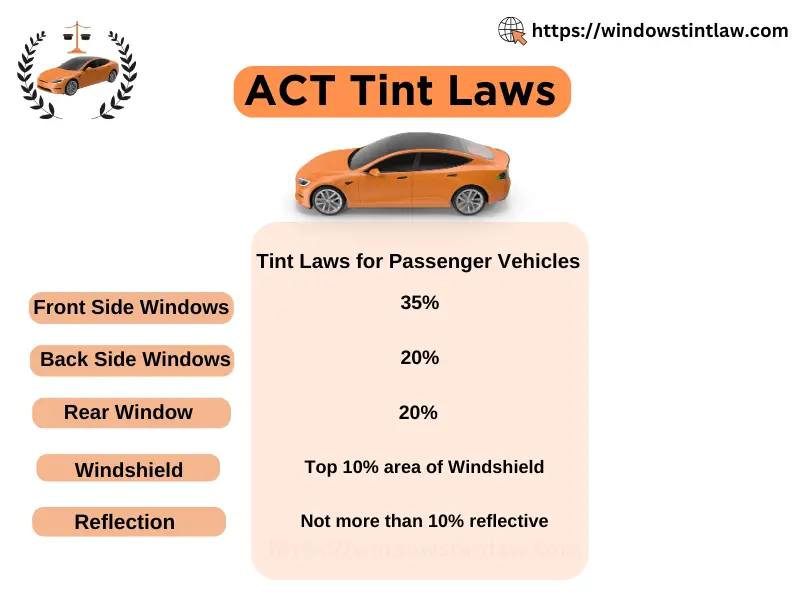
Australian Capital Territory (ACT) Tint Laws
Australian Capital territory regulated tinting laws so that drivers could not go beyond the limitation, as the tinted windows reduce the driver’s vision which impacts on safe and secure driving experience.
ACT Tinting regulations permit 35% VLT for the front side windows while back side windows and rear window can be covered with film of minimum 20% VLT.
Additionally, the uppermost 10% part of the windscreen above the wipers can be tinted with any LT percentage. However, Tinting the Lower part of the windscreen is restricted.
Trucks, Commercial Vehicles and Buses should also obey the same rule as passenger vehicles that allows minimum 35% VLT on the front side windows.

New South Wales (NSW) Tint Laws
New South Wales imposed tinting regulations for the safety of drivers and passengers on the roads & highways. NSW tint laws permit 35% VLT for the front side windows while back side windows and rear window must allow 20% of the Light to transmit through the window glass.
The Top 10% portion of the windscreen, which is above the highest part of the wiping area can be tinted with any LT percentage, whereas no other area of the windshield is allowed to tint.
Reflective tinting or glazing materials are strictly restricted in NSW territory.
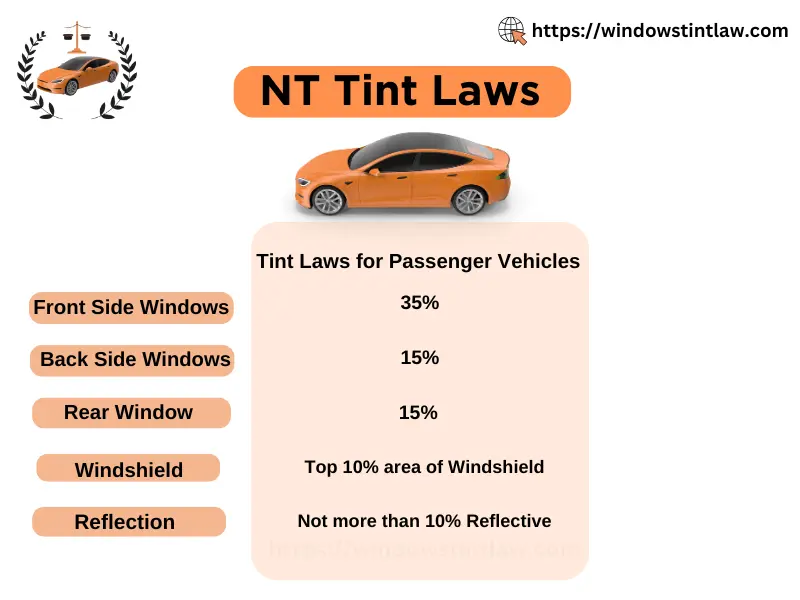
Northern Territory (NT) Tint Laws
According to Northern Territory Tint Laws, Front side windows of the passenger vehicles must have a minimum 35% Visible light transmission percentage. For the back side windows and rear window, The tinted material must allow at least 15% Light transmission.
The highest area of the windscreen can be tinted with any VLT percentage, however the tint is not allowed on other areas of the windscreen. The tinting materials must not reflect more than 10% light than a standard car window, the same rule applies to all territories.
Disobeying Tinting rules can cause tint tickets and repeated violations may lead to legal concerns. Being a good citizen, it’s our right to follow the rules and regulations of state to keep the roads safer.
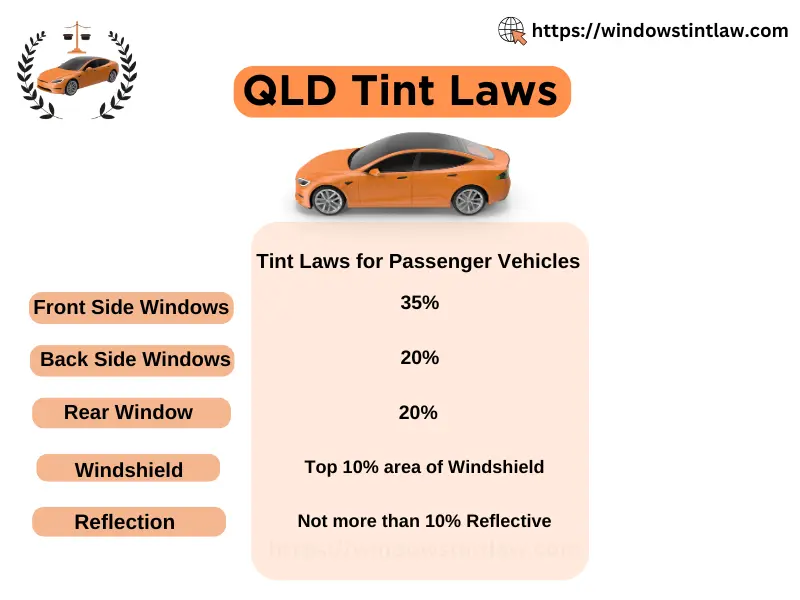
Queensland (QLD) Tint Laws
Queensland Tint laws were imposed for the safety of the people on roads, as the illegal darkest tints impairs the drivers vision which may cause injury in event of a collision. Hence complying with the tinting rules is mandatory for a safe ride.
Queensland tinting regulations allow 35% Light transmission through the Front side windows, while the back side windows and rear windows of the passenger vehicle must transmit at least 20% light.
Windscreen tint is not allowed, but only the top strip or band above the highest wiping area can be covered with tinting material of any VLT percentage provided that it does not intrude into the primary vision area of the windshield.
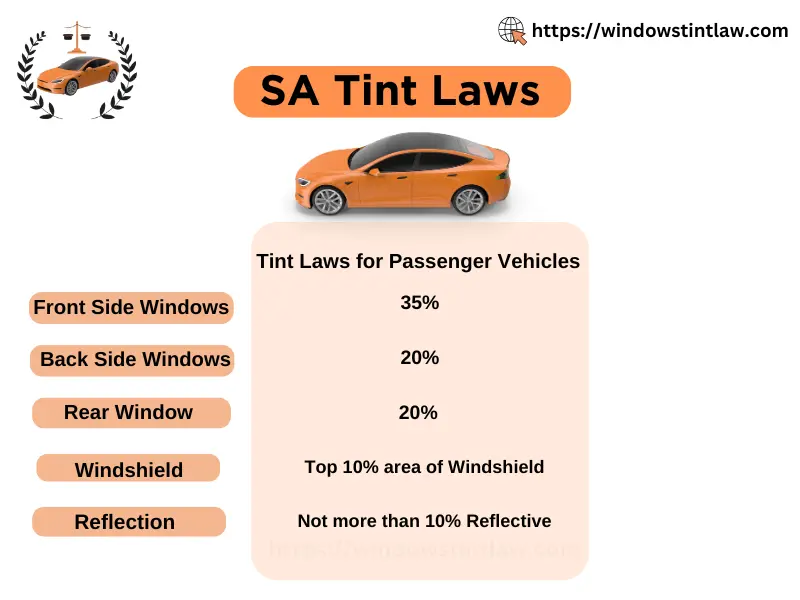
South Australia Tint Laws
South Australia tint laws are no more different than other states. To ensure safety of drivers and passengers, SA tinting regulations allow the tinting material with not less than 35% visible light transmission percentage can be installed on front side windows.
While the back side windows and rear window must transmit at least 20% Light.
The uppermost 10% area of the windshield can be tinted with any darkness, the area which is above the wipers. The tinting materials applied on vehicles must not reflect light to a large extent, as compared to standard car windows without any material or coating applied.
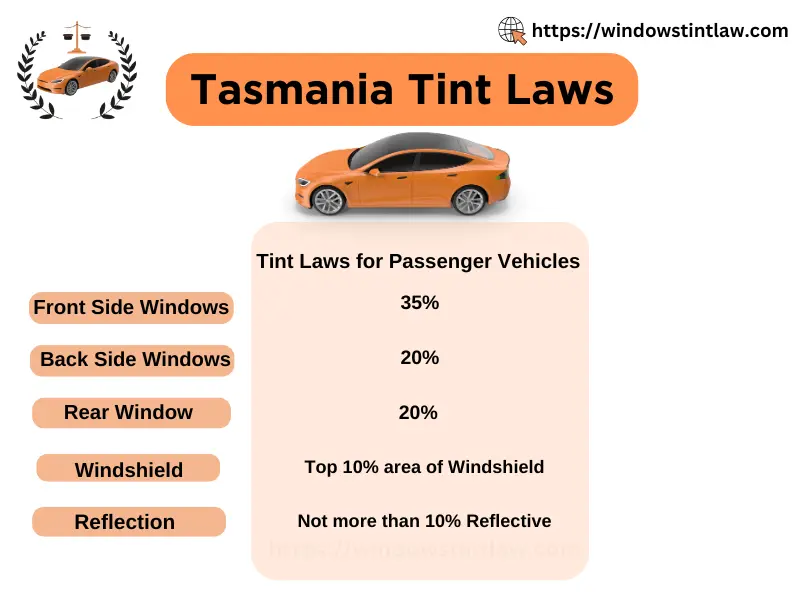
Tasmania Tint Laws
The Passenger vehicles operated and registered in Tasmania are allowed to have window tint on front side windows that must transmit at least 35% light. Plus, the back side windows and rear window should pass 20% of the light.
Like other territories, Tinted windscreens are restricted, but the top 10% area of the windshield also known as eyebrows in the tinting industry can be covered with material of any darkness.
Drivers and vehicle owners must comply with tinting regulations to avoid fines due to illegal window tints. In case you have illegal window tints installed, we recommend to remove the unlawful tint and replace it with the legal tint which fulfills the requirements.
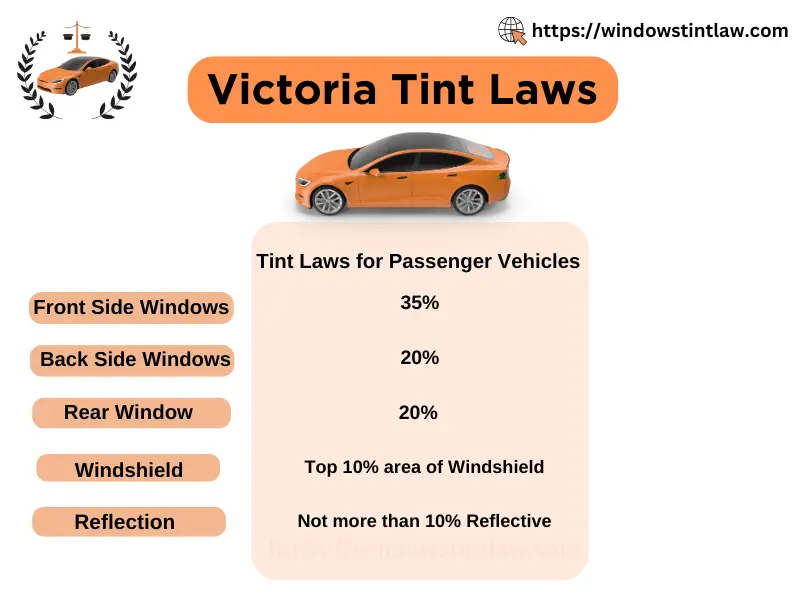
Victoria (Vic) Tint Laws
Tinting rules in Victoria allows motorists to tint front side windows of vehicles with a material that must pass at least 35 percent visible light through window glass. Addition to this, the back side windows and rear window of the vehicle should transmit 20% Light.
The tinted windows should not reflect sunlight or headlight of other vehicles, as it produces glare which can be annoying for other drivers. That’s why Victoria tinting regulation do not permit the solar reflectance of more than 10%.
Any tinted vehicle lower than the allowed limits shall be considered as illegal and fine shall be issued to the driver, if caught by the police. Police officers have an electronic device known as a tint meter or window glass reader to identify the Light transmission percentage.
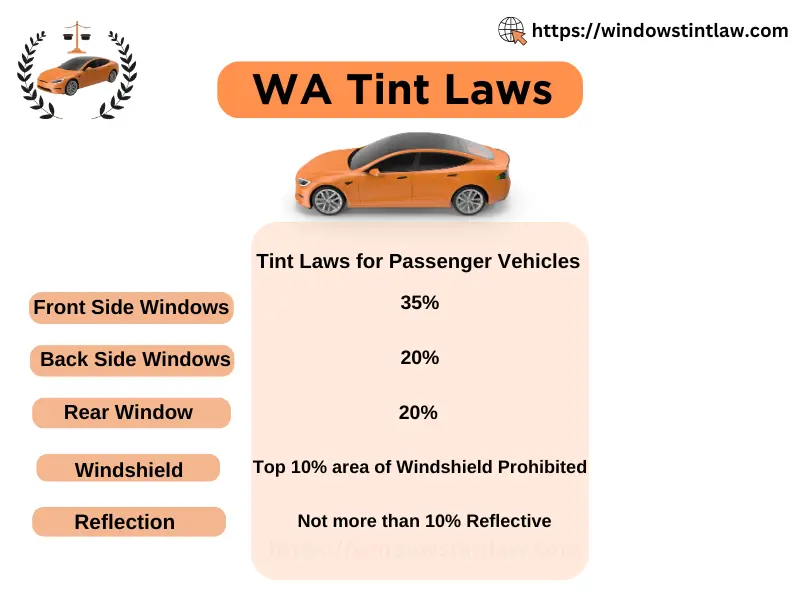
Western Australia (WA) Tint Laws
As per Western Australian Road Traffic Regulations 2014 , restriction imposed on tinting levels that may be applied on vehicles windows.
According to Updated regulations, Windscreen should not have any tinting material applied to it. Addition to this, the top area (strip or band) of the windscreen is also restricted in Western Australia.
The front side windows must pass at least 35% Light, regardless of tinting material applied to vehicle windows. The back side windows and rear window should have a Light Transmission (LT) percentage of 20% or more.
Key Takeaways
Remember the below listed key points to comply with the tinting regulations of Australia:
- Never apply darker than 35% VLT on the front side windows. By complying with this tint limit you can travel to all Australian Territories by remaining within the tinting rules.
- All Territories of Australia permit to apply tint on the top 10% area of the windshield except Western Australia.
- All Territories allow the tinting or coating materials with solar reflectance of not more than 10% while New South Wales restrict to apply reflective tint types.
- All Australian Territories permits 20% VLT for the windows behind the driver seat, but Northern Territory allows only 15% VLT for the back side windows and rear window.
